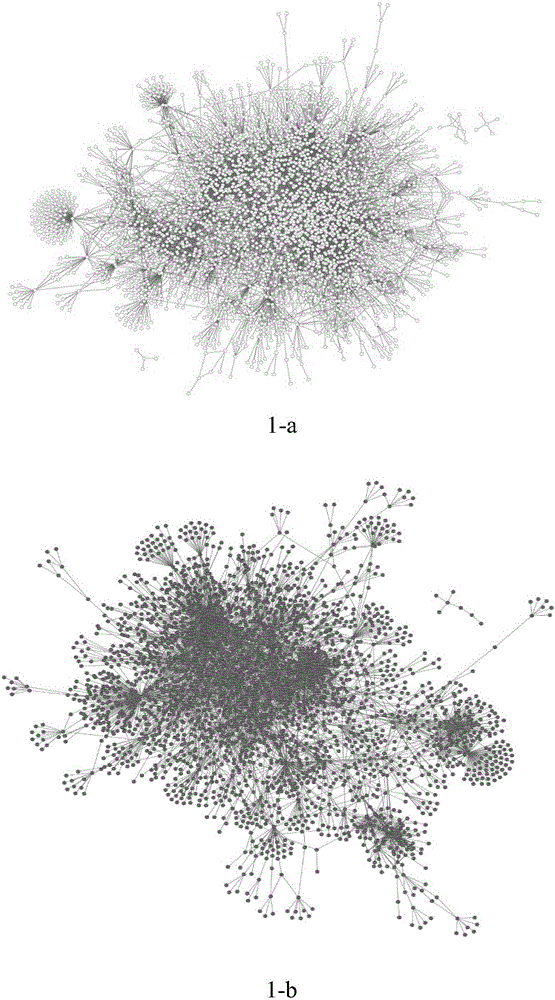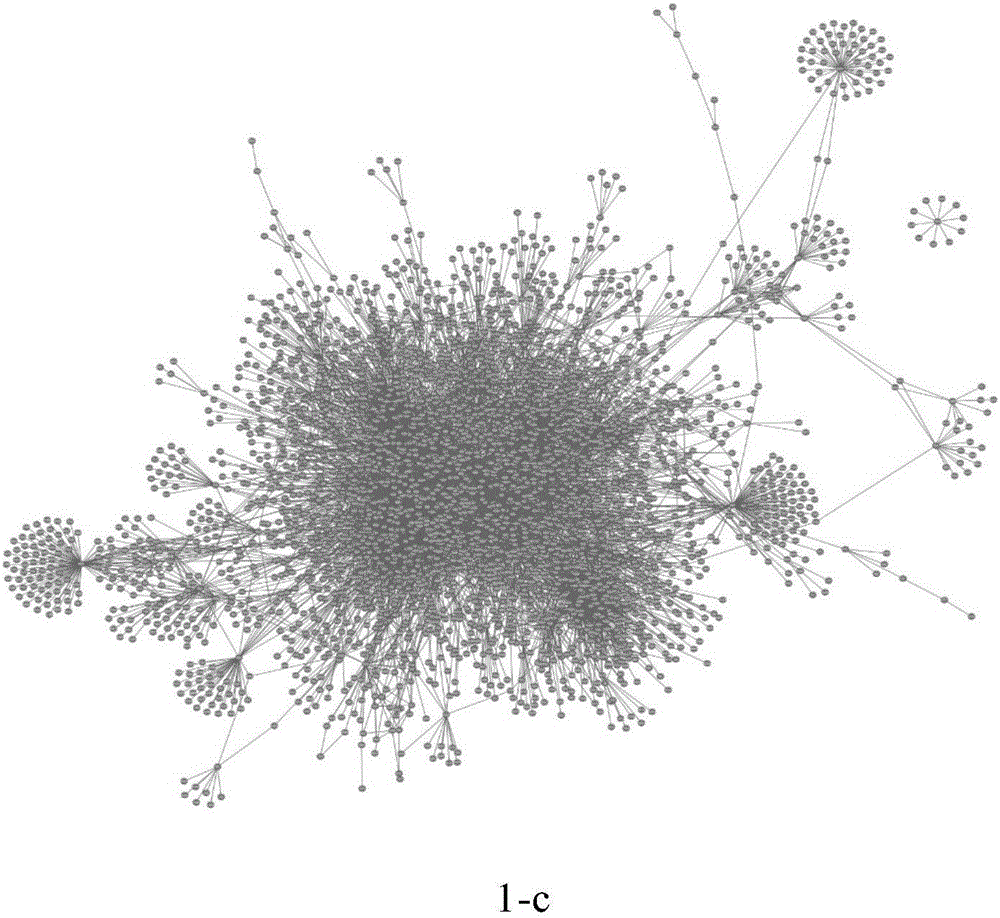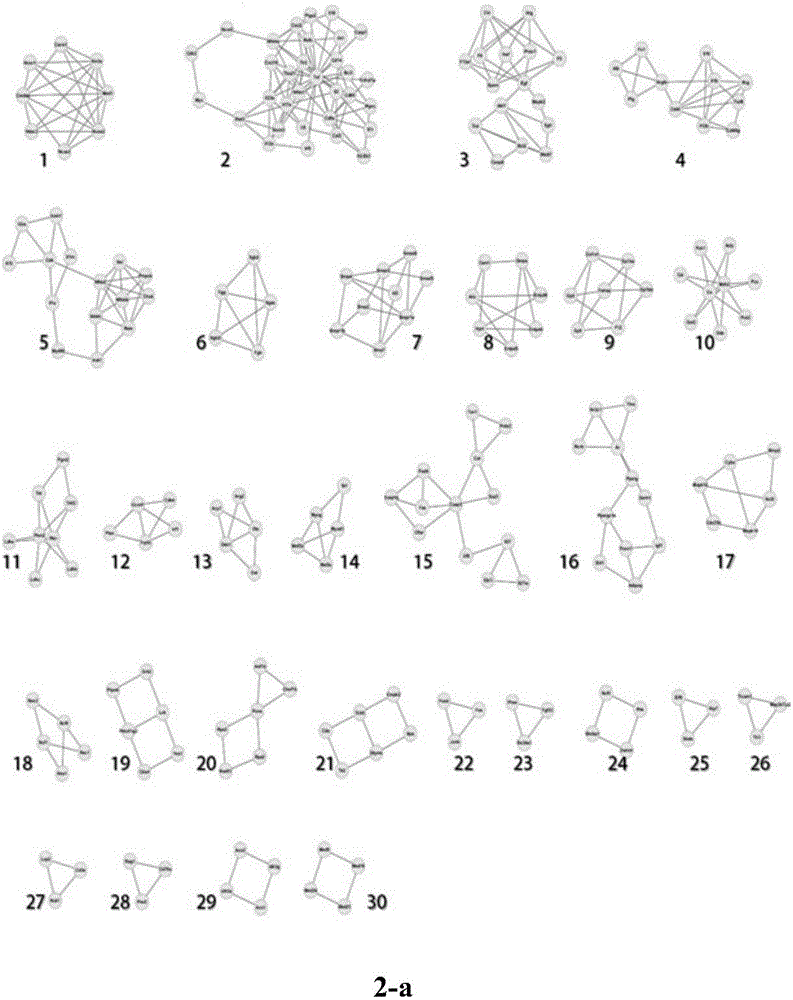Method for quantitatively analyzing changes of modules in biological molecular networks before and after drug intervention
A biomolecular network and quantitative analysis technology, applied in the fields of biological systems, bioinformatics, special data processing applications, etc., can solve problems such as ignoring comprehensive quantitative analysis
- Summary
- Abstract
- Description
- Claims
- Application Information
AI Technical Summary
Problems solved by technology
Method used
Image
Examples
Embodiment 1
[0050] Example 1 Intervention of mouse cerebral ischemia model with effective components of Qingkailing, quantification of changes in modules in protein interaction networks, and identification of effective change module pairs (fusion of 10 topological parameters)
[0051] Data Sources
[0052] The data in this example are derived from: the use of five effective components of refined Qingkailing, namely baicalin (BA), geniposide (JA), cholic acid (UA), baicalin + geniposide (BJ; BA+JA) , geniposide + cholic acid (JU; JA + UA) and the invalid component mother of pearl (CM) intervened in the mouse cerebral ischemia-reperfusion injury model, and the significantly differentially expressed genes were significantly differentially expressed by Ingenuity Pathway Analysis (IPA) Perform analysis to extract statistically significant gene sets associated with biological function annotations in IPA biological function enrichment results. Among them, the model group (Vehicle) contained 1...
Embodiment 2
[0083] Example 2 Intervention of mouse cerebral ischemia model with effective components of Qingkailing, quantification of changes in modules in protein interaction networks, and identification of effective change module pairs (8 topological parameters fusion)
[0084] Use the same network data as in Example 1. In this embodiment, Step 1 and Step 2 are the same as Embodiment 1.
[0085] Step 3, using 8 parameters, namely non-overlapping nodes, non-overlapping edges, overlapping nodes, overlapping edges, network density, network centrality, network average weight, shortest path, these 8 topological parameters representing different dimensions of the module are fused, and at the same time The weight of each parameter is shown in Table 8. Applying the k value method described in Example 1, the degree of change of the module from the disease state to the state of the JU group after drug intervention is expressed as follows:
[0086] Table 8 Each variable represents parameters ...
Embodiment 3
[0097] Example 3 Intervention of mouse cerebral ischemia model with effective components of Qingkailing, quantification of changes in modules in protein interaction networks, and identification of effective change module pairs (fusion of 5 topological parameters)
[0098] Use the same network data as in Example 1. In this embodiment, Step 1 and Step 2 are the same as Embodiment 1.
[0099] In step 3, 5 parameters are used, namely, non-overlapping nodes, non-overlapping edges, overlapping nodes, overlapping edges, and network centrality, which represent the topological parameters of different dimensions of the module, for fusion, and the weights of each parameter are shown in Table 11. Applying the k value method described in Example 1, the degree of change of the module from the disease state to the state of the BJ group after drug intervention is expressed as follows:
[0100] Table 11 Each variable represents parameters and weights (5 parameters)
[0101]
[0102] ...
PUM
 Login to View More
Login to View More Abstract
Description
Claims
Application Information
 Login to View More
Login to View More - R&D
- Intellectual Property
- Life Sciences
- Materials
- Tech Scout
- Unparalleled Data Quality
- Higher Quality Content
- 60% Fewer Hallucinations
Browse by: Latest US Patents, China's latest patents, Technical Efficacy Thesaurus, Application Domain, Technology Topic, Popular Technical Reports.
© 2025 PatSnap. All rights reserved.Legal|Privacy policy|Modern Slavery Act Transparency Statement|Sitemap|About US| Contact US: help@patsnap.com



